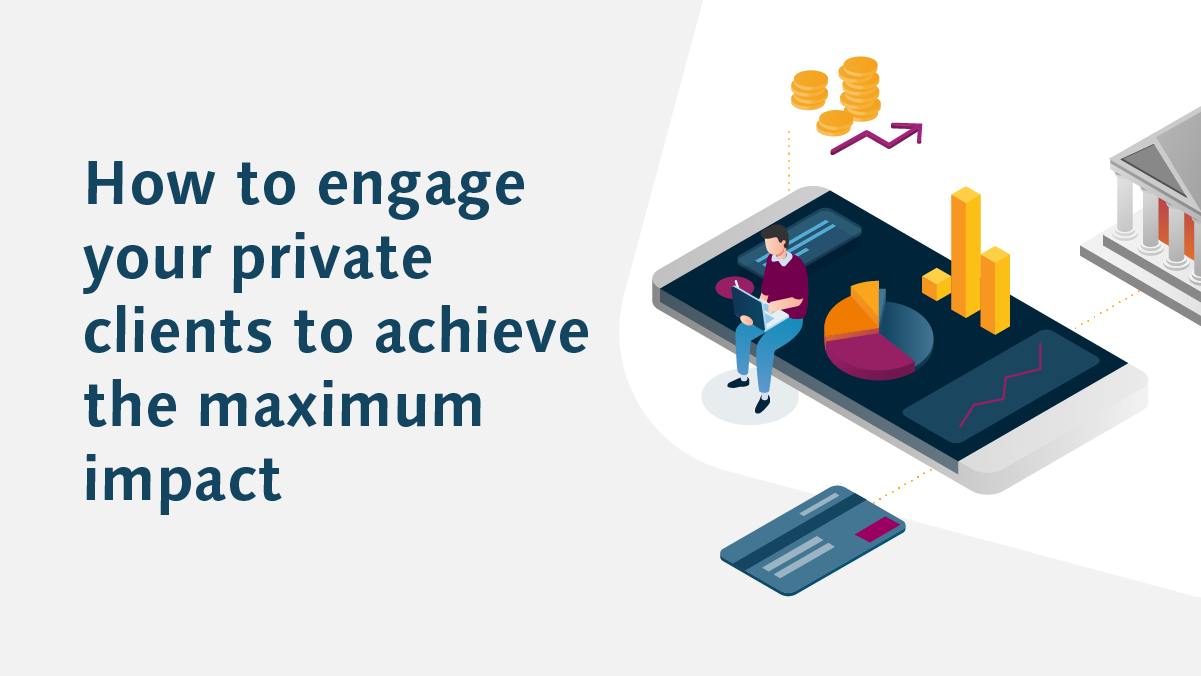
Our Chief Technology Officer, Thomas Roth joined a Hubbis Wealth Management panel discussion to debate the challenging topic: "How to engage your private clients to achieve the maximum impact."
Weren’t able to attend? Watch the recording here or read a summary of the webinar below.
Ensuring successful client engagement is determined by 3 key points:
- Client engagement means that a Wealth Management institution competes for a client’s time. This includes time spent on various tasks such as work, sleep, entertainment (e.g. Netflix, Spotify), as well as other digital app offerings.
- In improving the user experience (UX) of a Wealth Manager’s portal or mobile app solutions, clients voluntarily spend more time within the realm of the financial institution. This allows the Wealth Manager to increase touchpoints with clients, e.g. educating them about suitable investments or lending offers, ultimately increasing the ability to cross- and up-sell. This type of engagement optimization can be achieved by improving the ease of use, increasing the utility for the clients and offering targeted functionality.
- While administrative procedures relating to regulation are necessary tasks within the client’s life cycle with the financial institution, it can be approached differently so it doesn’t just have to be a box ticking exercise. Tasks like the suitability and appropriateness check can be used as part of an engaging and trust building client session instead of a 5-page form to fill out and return.
"We have transitioned towards a world where we try to focus more on behaviour and psychographics instead of just personal historic data and socio-demographics."
By changing the approach to be more behaviour-centred, any front-office system landscape will perform better in several ways:
- Intelligent digital marketing systems are continually updated to provide recommendations based on users’ behavioural predictions, not simply just static historical data that may no longer be relevant (as is often today the case – getting ads on microwaves after one has just purchased a microwave).
- CRM systems can identify clients at risk of customer churn, instead of just listing clients.
- Pricing systems are able to suggest optimized pricing based on value and usage, instead of past purchases.
"Combining the digital approach and the personal touch of a human advisor in client servicing is the true hybrid service approach – the key is to understand where humans provide value in the process due to emotional/ complex/ impactful events for clients."
Implementing a hybrid servicing approach allows a lot of processes to be digitalised because it is more convenient, minimises wait time and ultimately promotes the option of having a browsing style that suits the customer and not just the relationship manager. At the same time, having systems in place that can identify a stressful or emotionally important issue and escalate it to a trusted human advisor, will ensure the client still receives assurance when it is needed most.
Curious how technological improvements in UX could transform your organisation? Book a one-to-one workshop with one of our leading experts to find out more.
Our trends report on wealth management could be of interest to you as well: "To lead in wealth management, incorporate these key drivers in your strategy" - download the report here.




